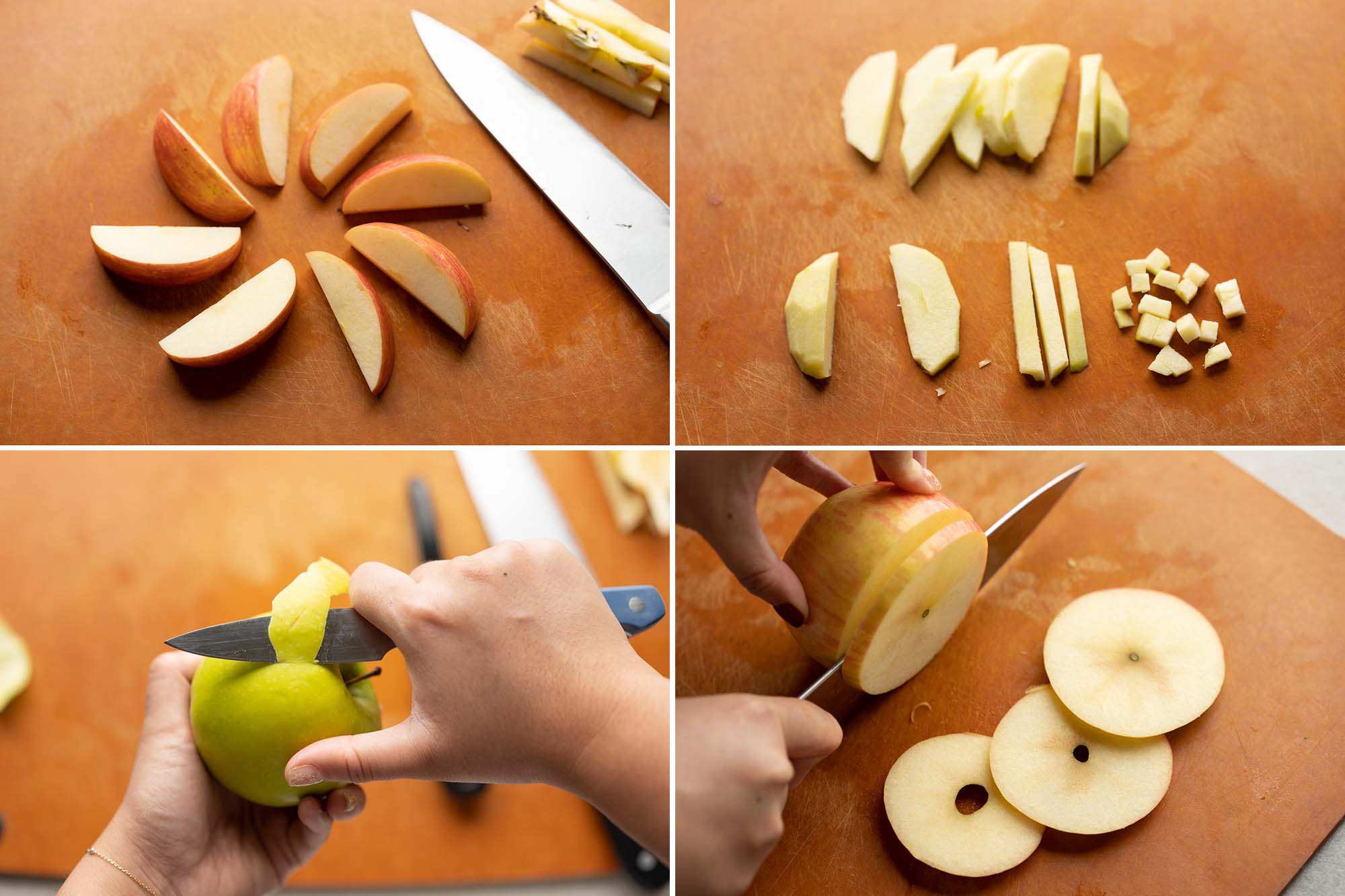How To Cut A Pomegranate- A Simple Guide
Do you love the bright, tangy burst of pomegranate seeds but find yourself avoiding them because getting them out feels like a huge, messy chore? You are certainly not alone in that feeling. For many, the idea of opening one of these beautiful fruits brings up thoughts of stained kitchen counters and sticky hands, which, to be honest, can really take away from the joy of eating them. But what if there was a way to get to those lovely ruby gems without all the fuss?
Well, there actually is a rather straightforward approach that can help you get to the good stuff inside with quite a bit more ease. This method helps keep things tidy, letting you enjoy the fruit without turning your kitchen into a crime scene of red juice. It's a simple change in how you approach the task, and it can make a real difference in your fruit preparation routine. So, you know, it's almost like a little kitchen secret.
Forget the old ways that left you scrubbing surfaces and wondering if it was even worth the trouble. We're going to walk through a process that many folks, including some very experienced kitchen professionals, find to be the most effective. This means less mess and more delicious pomegranate arils for whatever you might want to use them for, whether it’s a light salad or a sweet treat. Basically, all you need is a fresh pomegranate, a small, sharp knife, and a willingness to try something a little different.
Table of Contents
- Why is how to cut a pomegranate so often a messy task?
- Getting Ready to Cut a Pomegranate
- What supplies help when learning how to cut a pomegranate?
- The First Steps- How to Cut a Pomegranate's Top
- How to cut a pomegranate around the middle?
- Opening Up the Fruit- How to Cut a Pomegranate into Sections
- How to cut a pomegranate without losing seeds?
- Using Your Pomegranate Seeds
Why is how to cut a pomegranate so often a messy task?
Many people feel that preparing a pomegranate is a bit of a challenge, and it's easy to see why. The fruit holds its precious little seeds, or arils, in a rather protective way, surrounded by membranes and a skin that can release a vibrant red liquid when pierced. This juice, while lovely in color, has a tendency to spread and stain, turning a simple kitchen task into something that requires a good deal of cleanup. It's really just the nature of the fruit, you know, how it's put together.
The traditional methods often involve cutting the fruit in half, which can cause a sudden gush of juice and lead to a scattering of those tiny, juicy pieces everywhere. It’s like trying to open a water balloon without getting wet, which, as a matter of fact, is pretty hard to do. This is why so many folks give up on enjoying fresh pomegranate and opt for pre-packaged seeds, even though doing it yourself can be quite satisfying.
But there are approaches that really minimize this issue, helping you keep the juice where it belongs – mostly inside the fruit until you're ready to scoop out the arils. It’s about making a few thoughtful cuts that respect the fruit's natural structure, allowing you to open it up in a controlled way. This helps avoid the sudden burst and the subsequent cleanup, making the whole experience much more pleasant. Honestly, it changes everything.
Getting Ready to Cut a Pomegranate
Before you even pick up a knife, it's a good idea to gather what you’ll need. This isn't a complicated process, but having your items ready makes everything flow a bit more smoothly. You want to set yourself up for success, as they say. A fresh pomegranate is obviously the main item, and picking one that feels heavy for its size often means it's full of juice and ready to be enjoyed. You know, a good, plump one.
You'll also want a cutting surface that can handle a little bit of juice, just in case. A plastic cutting board, for example, is often a better choice than a wooden one because it’s less likely to absorb any color and is generally easier to wipe clean. Wooden boards, while lovely, can sometimes hold onto those bright red marks. So, just a little something to think about there.
The right cutting tool is also important. A small, sharp knife, often called a paring knife, works very well for this task. Its smaller size gives you more control for the delicate cuts you'll be making. You don't need a huge chef's knife for this; something precise is actually better. This helps you get into the fruit's structure without too much effort, making the whole thing less of a struggle.
What supplies help when learning how to cut a pomegranate?
When you're preparing to tackle a pomegranate, having a few specific items at hand can truly simplify the process. It's not about having a lot of fancy gadgets, but rather the right simple things. For instance, a fresh pomegranate, of course, is at the top of the list. You want one that feels solid and has a nice, deep color, indicating it's ripe and full of those juicy little pieces. Basically, you want a good one.
A
- Liensue S
- 25 Money Secrets From Donald Trump Pdf
- Radiohead Creep
- Frank Gallagher Shameless
- Patricia Arquette Then And Now

How to Cut Carrots - Chefjar

Cutting

How to Cut an Apple (4 Different Methods) - Fueled With Food